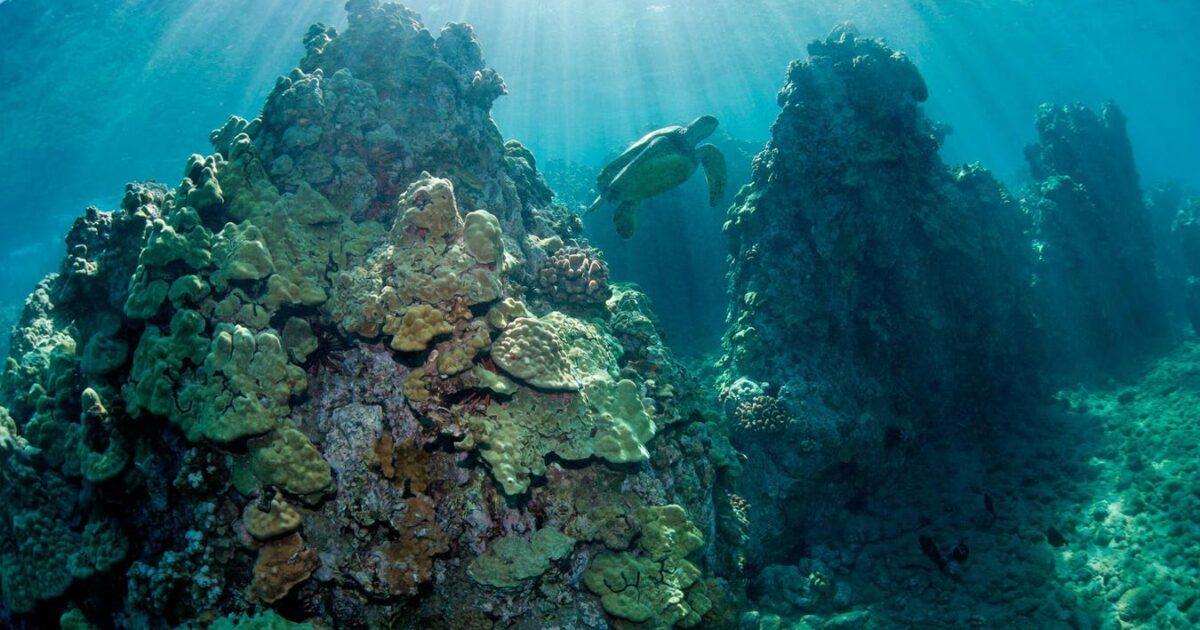U.S. Blue Economy Aided By Federal Release Of Seafloor Minerals Guide

Sea turtle swimming through a giant healthy coral reef in Hawaii.
America’s blue economy made strides with the federal release of a new guide to critical seafloor minerals within U.S. waters for use in batteries, stainless steel and other manufacturing.
Interior Secretary Doug Burgum announced April 24 the issuance of the “U.S. Geological Survey Global Seabed Mineral Resources.”
“By enhancing our understanding of the mineral wealth beneath our oceans, we are fostering American energy independence, supporting the growth of vital industries, and ensuring that our nation remain competitive on the global stage,” Burgum noted in a media statement. He added that the survey of seafloor minerals is key to “unlocking America’s vast natural resources” as part of the Trump administration’s agenda.
“Only a few locations have sufficient data to determine whether they have deposits that could be viable for commercial production. This data gap can only be filled through dedicated sampling and mapping,” the announcement stated.
Among the important seabed critical minerals thought to be with U.S. waters are cobalt-rich ferromanganese crust, phosphorite and polymetallic sulfide.
Seastars on algae-covered cobbles and boulders from Massachusetts Bay near Cohasset, Mass.
“Minerals can be found in every ocean basin, from the coastal zone to the deep ocean,” the factsheet described. “Nickel, cobalt and manganese, used in stainless steel, superalloys and batteries, are abundant in seafloor deposits. Rare earth elements and yttrium are present as well as platinum and other platinum group elements, which are critical minerals, as well as gold and silver.”
For six decades the USGS has been investigating the possibility of deep sea mining and conducting scientific experiments. USGS has been focusing on seabed and land minerals as well as mineral supply chains critical to U.S. national security and the economy.
Woods Hole Coastal and Marine Science Center scientists and technologists learn about a seafloor … More
“USGS science is extending our understanding of where critical minerals may be found, such as mineral formations in the Escanaba Trough deep under the Pacific,” Sarah Ryker, USGS acting director, stated in the announcement. “USGS research and mapping of seabed minerals and the environments in which they are found complements our work on land-based minerals and supply chains.”
Amy Gartman, USGS research oceanographer and chief scientist, examines a mineral sample from a … More
